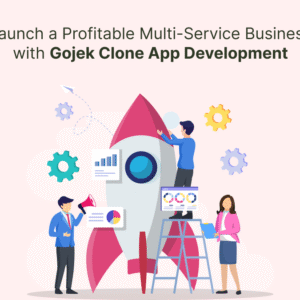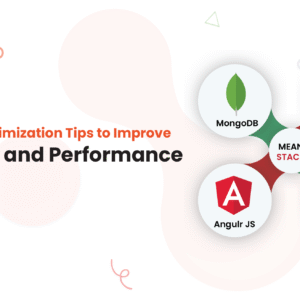A clear cloud strategy is what separates those who scale and those who get stuck.
The right cloud strategy helps ditch legacy drag and unlocks real growth. With digital transformation speeding up, accelerating your cloud migration isn’t a maybe, it’s a must.
The Strategic Imperative: Why Mid-Sized Enterprises Can’t Afford to Wait
Mid-sized enterprises hold a distinct place in the business landscape.
Unlike startups that build cloud native applications from scratch or large enterprises with vast resources, mid-sized businesses must strike a balance between innovation and operational stability, all while managing limited budgets and manpower.
Market trends in 2025 emphasize this challenge. Seventy-three percent of enterprises have adopted hybrid cloud solutions, moving away from single-cloud models. This shift highlights the growing importance of flexible cloud strategies that support enterprise cloud adoption across industries.
The Cost-Efficiency Paradigm
Cost efficiency remains one of the strongest incentives for mid-sized enterprises embracing cloud migration.
Eighty-four percent of cloud adopters report significant reductions in computing costs, offering clear financial benefits that improve profitability. But migrating is only the first step; smart cloud management and cost optimization are essential to fully realize these savings.
Key technical approaches for cloud cost optimization include:
- Resource Right-Sizing: Use automated cloud scalability policies targeting CPU utilization between 70 and 80 percent to balance performance and cost.
- Reserved Instance Strategy: Commit to reserved instances for predictable workloads over 1 to 3 years to cut costs by 30 to 60 percent.
- Storage Tiering: Implement lifecycle policies that move inactive data to cheaper storage tiers after 30 to 90 days.
- Network Optimization: Leverage content delivery networks and edge locations to reduce data transfer costs by up to 40 percent.
Building Your Cloud Migration Foundation
Successful cloud migration for mid-sized enterprises requires a well-planned approach that aligns technical and business needs.
Unlike larger companies, SMEs must minimize downtime and manage resource constraints carefully throughout cloud application development and migration.
Phase 1: Assessment and Strategy Development
Before migrating, enterprises must conduct a thorough analysis of their current environment. Key activities include:
- Application Portfolio Analysis:
- Catalog all applications with dependency maps
- Assess cloud readiness using the 6Rs framework (Rehost, Replatform, Refactor, Retire, Retain, Repurchase)
- Identify quick wins and prioritize impactful migrations
- Compare the Total Cost of Ownership between the current and cloud environments
- Technical Infrastructure Mapping:
- Document network topology and bandwidth needs
- Define security and compliance requirements
- Classify data and establish governance policies
- Identify integration points and API dependencies
Phase 2: Cloud Migration Steps for SMEs
A phased migration approach helps manage risk and build cloud competency gradually:
- Wave 1 (Months 1-3): Non-Critical Applications
- Migrate development and testing environments first
- Focus on apps with minimal dependencies
- Set up monitoring and cloud management processes
- Wave 2 (Months 4-8): Business Applications
- Migrate CRM, ERP, and productivity tools
- Deploy cloud management and backup solutions
- Strengthen security and compliance frameworks
- Wave 3 (Months 9-12): Mission-Critical Systems
- Move core applications requiring high availability
- Implement advanced monitoring and alerting
- Conduct disaster recovery tests and optimize performance and cost
Technical Specifications for Migration
- Network Connectivity: Use dedicated connections such as AWS Direct Connect or Azure ExpressRoute for bandwidth-heavy transfers.
- Data Transfer: Employ tools like AWS DataSync or Azure Data Box for large datasets above 10TB.
- Security: Deploy Web Application Firewalls with custom rules and DDoS protections.
- Monitoring: Use platforms like CloudWatch or Azure Monitor with custom dashboards and automated alerts.
Architecting Cloud Scalability for Mid-Sized Businesses
Scaling isn’t about piling on complexity.
Mid-sized enterprises need a cloud strategy that grows with them, is smart, simple, and efficient. The focus should be on architectures that adapt without becoming a tangled mess.
Why Cloud Native Applications Matter
Shifting to cloud native applications is a game-changer. It’s not just tech jargon; it’s how mid-sized businesses gain speed, flexibility, and resilience. This is key for smooth enterprise cloud adoption and unlocking cloud scalability benefits.
Core Building Blocks
Containerization
- Docker multi-stage builds keep images lean
- Kubernetes manages containers with horizontal autoscaling
- Service meshes like Istio help microservices talk seamlessly
- Automated vulnerability scans keep your container registry safe
Microservices Architecture
- API-first approach with OpenAPI specs
- Event-driven workflows using Amazon SQS or Azure Service Bus
- Separate databases per service with eventual consistency
- Circuit breakers isolate faults, so one issue doesn’t crash everything
DevOps Integration
- Automated CI/CD pipelines running unit, integration, and security tests
- Infrastructure as Code with Terraform or CloudFormation
- Deployment strategies like blue-green or canary releases
- GitOps for managing configs without headaches
Scaling That Works
- Horizontal scaling kicks in at 70% CPU use with a cap of 20 replicas
- When needed, capacity jumps 50% after sustained load, scales down by 25% if idle
- Vertical scaling watches memory usage (80% triggers) and CPU throttling
- Storage auto-expands based on disk I/O demands
Hybrid Cloud Solutions for Balance
Most mid-sized companies don’t choose all-in cloud or all-on-premises.
The sweet spot is hybrid cloud solutions, blending local control with cloud power. This approach supports legacy apps and sensitive data while enabling cloud migration for innovation and growth.
Architecture Highlights:
- On-premises virtualization with VMware or Hyper-V, plus cloud-replicated storage
- Secure, redundant VPNs linking on-premises and cloud
- Identity management federated via SAML or OpenID Connect
- Unified monitoring across hybrid setups
Workload Distribution:
- Sensitive data and compliance tasks stay local
- Dev, testing, backups, and disaster recovery shift to the public cloud
- Edge computing handles IoT data and real-time content delivery
How to Build a Cloud Strategy for Mid-Sized Businesses
Building a cloud strategy isn’t guesswork. It means aligning your tech roadmap with business goals and following a clear framework.
Step 1: Align Business and Tech
- Define your objectives and success metrics upfront
- Get executive buy-in and form cross-functional teams
- Plan migration timelines with clear milestones
- Budget thoroughly, including hidden costs
Step 2: Technical Planning
- Design scalable architectures with cloud scalability in mind
- Set strong security policies and compliance rules
- Establish cloud management procedures and governance
- Upskill your team for cloud application development and maintenance
Cloud Application Development That Works
For mid-sized firms, innovation has to be paired with reliability.
- Agile sprints with continuous integration
- API-first development with well-documented RESTful endpoints
- Cloud-native databases that scale automatically
- Integrated DevSecOps for continuous automated security
Key Implementation Metrics

- Aim for 80%+ test coverage with quality gates
- Ensure 95% of API calls respond in under a second
- Commit to 99.9% uptime backed by automated failover
- Use real-time Application Performance Monitoring (APM) tools
Benefits of Cloud Scalability for Growing Enterprises
Cloud scalability isn’t just about adding resources when needed. For mid-sized businesses, it’s a cloud strategy that unlocks growth without multiplying complexity.
Here’s why enterprise cloud adoption matters:
What You Gain Operationally
Resource Optimization
- Dynamic resource allocation tuned to real demand
- No more waste from over-provisioning
- Pay-as-you-scale model cuts down capital expenses
- Automatic scaling during busy periods, so you never miss a beat
Business Agility
- Faster rollout of new apps and services
- Enter new markets 40-60% quicker
- Experiment freely without big upfront costs
- Expand geographically without setting up new infrastructure
Cloud Scalability Technical Specs
- Response times under 200ms even when load spikes 10x
- Handle 1000% traffic surges with auto scaling
- Scale storage smoothly from terabytes to petabytes
- Automatic network bandwidth provisioning up to 100 Gbps
Cloud Cost Optimization for Mid-Sized Enterprises
Cost control is key during cloud migration. The 2025 State Of Cloud Cost Intelligence Report says only 30% of organizations truly know where their cloud spend goes. Here’s how to stay ahead:
Financial Management Framework
- Real-time cost tracking with department-level views
- Budget alerts and spending limits to avoid surprises
- Resource tagging for detailed cost visibility
- Monthly reviews for continuous savings
Optimization Techniques
- Reserved capacity cuts costs by 40-60% on steady workloads
- Spot instances save 70-90% on fault-tolerant tasks
- Right-sizing resources based on continuous monitoring
- Automated data lifecycle management to avoid bloat
Technical Cost Controls
- Auto-shutdown: dev environments off overnight and weekends, test environments after inactivity, staging aligned with releases
- Resource limits to prevent costly over-provisioning
- Storage and network quotas with approval workflows
Enterprise Cloud Adoption Best Practices
Success comes from more than tech. Proven practices across industries ensure smooth enterprise cloud adoption:
Governance & Compliance
- Strong IAM with multi-factor and role-based access
- AES-256 encryption at rest and TLS 1.3 in transit
- Web Application Firewall (WAF) with custom rules
- Automated compliance scans with remediation steps
Operational Excellence
- Disaster recovery: 4-hour RTO, 1-hour RPO
- 3-2-1 backup strategy with automated tests
- Change management with approvals and rollbacks
- 24/7 monitoring and escalation protocols
Technical Excellence You Can Count On
- Loose coupling and stateless design for easy cloud scalability
- Idempotent operations for safe retries
- Full observability with logging, monitoring, and tracing
- Performance: 95th percentile API calls under 500ms
- 99% of DB queries under 100ms
- File transfer speeds at least 1 Gbps
- 99.95% uptime with planned maintenance
Future-Proof Your Cloud Strategy
The cloud world keeps evolving. The market for cloud migration steps for SMEs is booming, from $232.5B in 2024 to over $800B by 2029 at 28% CAGR. Stay ready with:
Emerging Tech Integration
- AI/ML for model training, data pipelines, predictive scaling, and smart cloud cost optimization
- Edge computing for IoT, real-time processing, and compliance needs
- Zero-trust security with behavioral analytics and automated incident response
The Strategic Imperative
The benefits of cloud scalability for growing enterprises aren’t just hype. This blueprint is a transformation in how mid-sized businesses compete and operate. Treat cloud adoption as a strategic move, not just a tech project. Follow a proven framework, from assessment and phased cloud migration to smart architecture and cost control, and you unlock the agility and scalability needed today.
The window is closing fast. Mid-sized businesses that move now with proven blueprints and best practices will outpace the competition in a cloud-native world.
Ready to Transform?
Don’t wait while others take the lead. Our cloud strategy experts have helped hundreds of mid-sized enterprises scale smartly and efficiently.
Take action today: Book a free consultation with our experts
Start your low-risk migration journey
Your competitive edge is in the cloud. Let’s get started.











